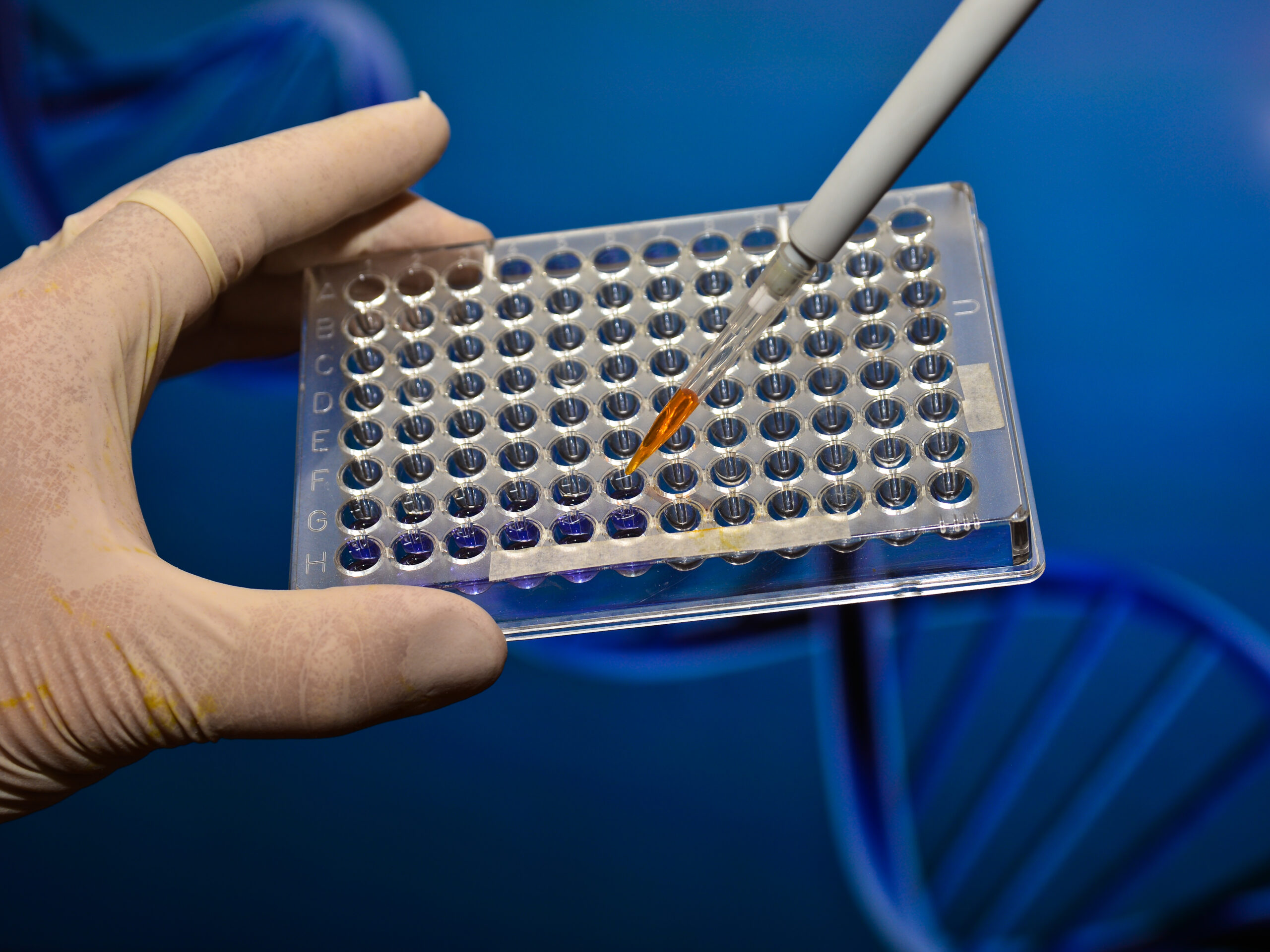Order your DNA report from www.dnagenics.com and get your HLA ancestry estimate
HLA (human leukocyte antigen) is a group of genes located on chromosome 6 that plays a critical role in the immune system. The HLA genes encode proteins that are found on the surface of almost all cells in the body and act as markers that identify cells as self or non-self. They are involved in the recognition and interaction between immune cells, such as T cells and B cells, and foreign substances, such as viruses and bacteria.
HLA proteins are also involved in the presentation of foreign antigens to the immune system, which is essential for the activation of immune responses. They do this by presenting small fragments of foreign proteins to T cells, which recognize the foreign antigens and trigger an immune response.
There are several different HLA genes, and each person has two copies of each gene, one inherited from each parent. There are many different HLA gene variations, and an individual’s specific HLA gene variations are referred to as their HLA type. HLA types are used in a variety of medical settings, including organ transplantation, tissue typing, and genetic disease diagnosis.
What are the genes and SNPs associated to the HLA?
The HLA genes are a group of genes located on chromosome 6 that encode proteins involved in the immune system. The HLA genes are divided into three main categories: class I, class II, and class III.
Class I HLA genes include:
- HLA-A
- HLA-B
- HLA-C
Class II HLA genes include:
- HLA-DR
- HLA-DQ
- HLA-DP
Class III HLA genes include:
- C4A
- C4B
- C2
- Bf
- TNF
There are many single nucleotide polymorphisms (SNPs) associated with the HLA genes. SNPs are single base pair changes in the DNA sequence that can have an impact on the function of the protein encoded by the gene. Some examples of SNPs associated with the HLA genes include:
HLA-A*02:01: This SNP is associated with an increased risk of developing certain autoimmune diseases, such as multiple sclerosis and type 1 diabetes.
HLA-B*57:01: This SNP is associated with an increased risk of developing HIV/AIDS.
HLA-DRB1*15:01: This SNP is associated with an increased risk of developing rheumatoid arthritis.
HLA-DQ2: This SNP is associated with an increased risk of developing celiac disease.
It is important to note that the presence of these SNPs does not necessarily mean that an individual will develop a particular disease. Rather, they are associated with an increased risk of developing certain conditions and may be used as risk markers in some cases.
HLA (human leukocyte antigen) genes can be useful for genealogy in a few different ways.
First, HLA genes are highly polymorphic, meaning that there are many different variations of these genes within the population. As a result, the specific HLA gene variations that an individual has inherited from their parents can be used to help determine their ancestry. For example, certain HLA gene variations may be more common in certain populations, such as those of African or European ancestry. By analyzing an individual’s HLA gene variations, it may be possible to infer their ancestry or identify their closest genetic relatives.
Second, HLA gene variations can also be used to help determine the likelihood of an individual being a match for organ transplantation. The HLA genes play a critical role in the immune system and are involved in the recognition and interaction between immune cells and foreign substances. As a result, the HLA gene variations of the donor and recipient must be carefully matched in order for a transplant to be successful. By analyzing the HLA gene variations of potential donors, it may be possible to identify the best match for a particular recipient.
Finally, HLA gene variations can also be used to help identify genetic predispositions to certain diseases or conditions. For example, certain HLA gene variations may be associated with an increased risk of developing autoimmune diseases or certain types of cancer. By analyzing an individual’s HLA gene variations, it may be possible to identify genetic risk factors that could impact their health or inform their healthcare decisions.
Interesting facts about HLA
- HLA stands for human leukocyte antigen. These genes are located on chromosome 6 and encode proteins that are found on the surface of almost all cells in the body.
- HLA genes play a critical role in the immune system, including the recognition and interaction between immune cells and foreign substances.
- HLA genes are highly polymorphic, meaning that there are many different variations of these genes within the population. As a result, an individual’s specific HLA gene variations are referred to as their HLA type.
- HLA types are used in a variety of medical settings, including organ transplantation, tissue typing, and genetic disease diagnosis.
- The HLA genes are divided into three main categories: class I, class II, and class III. Class I HLA genes include HLA-A, HLA-B, and HLA-C, while class II HLA genes include HLA-DR, HLA-DQ, and HLA-DP. Class III HLA genes include C4A, C4B, C2, Bf, and TNF.
- Certain HLA gene variations may be associated with an increased risk of developing certain diseases or conditions, such as autoimmune diseases, HIV/AIDS, and celiac disease.
- HLA genes can be useful for genealogy in a few different ways, including helping to determine an individual’s ancestry and identifying their closest genetic relatives.
- The HLA genes are some of the most highly studied genes in the human genome. Researchers have identified over 16,000 HLA gene variations to date.
- HLA genes are inherited from both parents, and an individual has two copies of each HLA gene, one inherited from each parent. This means that an individual’s HLA type is a combination of the HLA types of their parents.
- The HLA genes are involved in the presentation of foreign antigens to the immune system, which is essential for the activation of immune responses. They do this by presenting small fragments of foreign proteins to T cells, which recognize the foreign antigens and trigger an immune response.
- HLA proteins are also involved in the recognition and interaction between immune cells, such as T cells and B cells. This interaction is critical for the activation and function of the immune system.
- HLA types are used in organ transplantation to help determine the likelihood of a successful transplant. The HLA types of the donor and recipient must be carefully matched in order for the transplant to be successful.
- HLA typing can also be used in the diagnosis of certain genetic diseases, such as hematologic disorders and autoimmune diseases.
- HLA typing is also used in tissue typing, which is the process of identifying the HLA type of a tissue sample in order to match it to a potential recipient. This is often used in the case of bone marrow or stem cell transplants.





